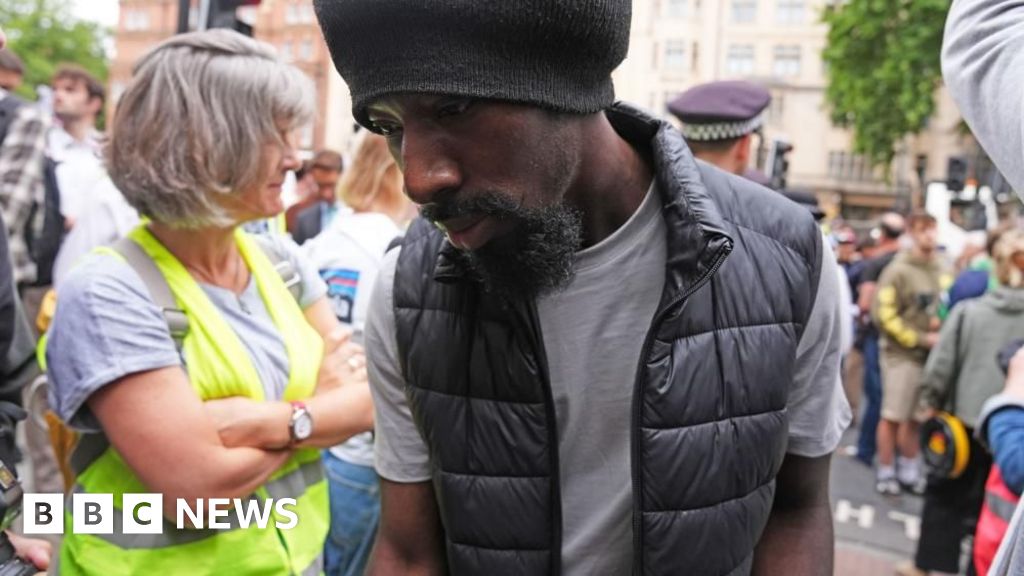It has become conventional wisdom, both in policy establishments and the international relations academic community, to endorse the emergence of “multipolarity” between 2020 and 2025. The combination of COVID-19, political volatility in the US, Russia’s war on Ukraine, and the Iran-Israel rivalry cum Middle East crisis are all produced as proof. Yet instead, the key conclusion from the previous five years, and in fact, the last 20 years of international politics, is not multipolarity through American decline per se, but a transformation in the relationship between Russia and its neighbours, whether those be adversaries like Ukraine, or partners like Iran. This stems from a collapse in Russia’s relative power, even as Iran comes under extreme pressure.
International relations debate has quickly accepted the concept of “multipolarity”, almost as rapidly as it accepted American hegemony under the “unipolar moment” 35 years ago. Yet the differences between these situations could not be starker. In 1991, the United States had outlasted its greatest geopolitical rival, the USSR, both by exploiting the fragmentation of the communist bloc after the Sino-Soviet split and through a large-scale military buildup that leveraged new technologies and operational concepts. The Soviet Union shattered, with Belarus and Ukraine splitting from the Russian-dominated Soviet empire. The Balts escaped Moscow’s grip as well. Farther west, the small nations of Eastern Europe, for whose liberty the UK entered the Second World War a half-century earlier, were also liberated from geopolitical domination. The same year the USSR dissolved, the United States ejected Iraq from Kuwait with only 292 combat deaths, nearly half of which came from friendly fire. American power was undeniable, hence the intellectual attraction of unipolarity is clearly explicable.
By contrast, the birth of multipolarity lacks comparable evidence. Long-range trends — ranging from the US share of global manufacturing to US relative economic size, productivity, and the relative rate of dollarisation in international trade — provide evidence of a shifting balance of power. Yet there is little indication of true multipolarity. Russia began its attempt to conquer Ukraine outright in February 2022, staging a lightning offensive meant to stun Ukraine into submission and shock the US and Europe enough to keep Ukraine isolated. Three years later, Russia has lost nearly a million military casualties killed or wounded. Its real inflation rate is likely significantly higher than an already high public figure of 10%. The Russian labour market remains tight, given emigration and war deaths. Russia lacks access to international financial institutions and is heavily reliant on Chinese financial and technological assistance to sustain its war effort and economy. Most critically, Russia is spending between 30 and 40% of its annual budget on military items. The broader Russian economy has been retooled for war, meaning the actual defence spending proportion may be even higher. All this is to conquer Ukraine, a country a fraction of Russia’s territorial extent, population, and economic product.
The above would imply that the significant international shift over the past five years has not been the end of unipolarity per se, but instead a complete realignment of Russia’s relative power vis-a-vis its neighbours. This holds relevance both in Europe, as Russia continues to prosecute its war against Ukraine and seeks to extend its dominance farther west, and in the Middle East, particularly towards Iran, where Russia’s geopolitical and military-strategic position has changed quite profoundly over three years. This is not to deny a change in relative American positioning, but instead to question the utility of “polarity” for analysis of international relations. The 2020s are not the 1990s, that much is obvious by the mere passage of time – this alone is poor evidence for the idea that the international order has transitioned from a unipolar to a multipolar configuration.
Understanding Russia’s reconfigured position relative to its neighbours requires recognising a profound shift in Russian strategy since 2021. Russian leaders from 1990 onwards sought to revise the post-Cold War European security system. The fundamental assumption was not that Russia had lost the Cold War – which it had – but that the Cold War was to be treated as a sort of historical aberration. In this view, Russia was to be granted a privileged geopolitical sphere once again. Moscow and Washington, alongside Berlin and Paris at most, were to reconstruct European security, with the small states of the former Eastern Bloc and the fragmented former Soviet republics organised along mutually-agreed lines. Reality was rather different. The United States chose to stake its claim on the sovereignty of the Eastern European states without regard to the actual or potential military balance in Eastern Europe. This explains the rather bizarre decision to admit strategically irrelevant Czechia and Hungary alongside Poland in 1999, and to cold-shoulder Ukraine, the only country apart from Poland that could actually develop a large-scale land army with proper financing and sustainment. The US chose to stand on principle and law rather than assess the balance of power in part because of an obsession with not stepping on Russia’s toes, which was only pushed aside briefly during an unfortunate confrontation in the Balkans. By referring to the legal rights of Europe’s small powers between Germany and Russia, Washington believed it might keep Russia engaged in Europe’s security structures while also satisfying the demands of less hefty capitals.
Vladimir Putin’s ascent to power in 2000 marked the beginning of a slide into confrontation with the West. Much like Boris Yeltsin, Putin first sought a partnership with Washington but, realising the US would not simply cede Eastern Europe to Russia economically and strategically, began a methodical process of confrontation. Key to Russian strategy from 2005 onwards was the progressive integration of Ukraine and Belarus into Russian economic structures. This has largely succeeded in Belarus, except for Minsk’s attempted 2017-2020 opening to Washington. It has flatly failed in Ukraine, with Euromaidan confirming Russia’s poor strategic choices.
From 2014 onward, confrontation between Russia and Ukraine was essentially inevitable. As long as Ukraine did not capitulate – which, between 2014-2021, would have meant accepting Russia’s demands under the Minsk process to integrate the Russian-controlled parts of Donetsk and Luhansk into Ukraine again, thereby giving Moscow a veto over Kyiv’s security and economic policy – Ukraine would continue to drift towards the West. Hence, Russia was faced with a choice: accept Ukraine’s irrevocable loss as a geopolitical entity, which would in time jeopardise Russian domination over Belarus as well, or use force to correct the situation.
Russia’s initial invasion flatly failed to accomplish its strategic objective, which was the rapid conquest of Kyiv, elimination of Ukraine’s ruling elite – likely including the assassination of Ukrainian president Volodymyr Zelensky and the Ukrainian cabinet and higher military command – and establishment of a puppet regime headed by Russian-aligned Ukrainian oligarch Viktor Medvedchuk. Russia did capture territory, but this is irrelevant: from the viewpoint of military assessment, Russia’s entire campaign plan was geared only towards one goal; hence, failing to achieve that specific goal indicates the broader failure of the campaign plan.
Between March and September 2022, Russia sought to finish the war as it initially started, by throwing increasing quantities of men and materiel at Ukrainian defences. The Ukrainian Armed Forces took undeniable casualties, but their trade with Russia was positive: the pre-war Russian Ground Forces were essentially destroyed, replaced by a military with significantly less operational competence and materiel capacity, and largely relying upon expendable quantities of human resources that could be thrown into a continuous meat-grinder. This approach can be classified as a strategy of exhaustion. Russia’s goal was and remains to wear Ukraine down over time. The issue is that Ukraine has reasonable access to the financial resources it needs to sustain its war effort through Western backing, and increasingly has become capable, as of mid-2025, of producing the materiel needed to fight this war through its domestic production capacity. Paradoxically, the pressures of war have made Ukraine more capable of resisting Russian assault, even as Ukraine loses valuable manpower day after day defending against waves of Russian attacks, and even as Russia bombards Ukrainian cities night after night.
To truly exhaust Ukraine, Russia must instead target its centre of gravity, that is, Ukraine’s coalition with the Western powers. By engaging in a large-scale propaganda campaign, attempting to subvert Western institutions, and employing various forms of intelligence direct action, Russia believes it can sap Western capabilities and ultimately break Western resolve. Since early 2025, by locking Ukraine into a largely open-ended negotiation process, Russia has sought to use diplomacy as a tool of attrition as well. The scale of Ukraine’s resistance, and its linkage to the Western powers, has, however, created for Russia a paradoxical opportunity to overturn the European security order wholesale. Russia’s war on Ukraine may have begun as a war only against Ukraine. But it has quite obviously broadened into a near-term war against all of Europe, in an attempt to transform European security architecture.
Russia has cultivated intelligence access and friendly regimes in Hungary and Slovakia, both of which border Ukraine. It maintains control of Transnistria, the manufactured breakaway element of Moldova. It also retains deep connections to Alexander Vucic’s Serbia. If Ukraine falls under Russian domination, Russia can quite quickly cut northern and southern Europe apart from each other, isolating NATO members Romania and Bulgaria on the Black Sea, inducing Turkey to question its commitments to NATO in general, and projecting various forms of power into Czechia, Austria, and Germany. This will leave the northeastern European states isolated against long-term Russian pressure, and may well prompt France, Germany, and the Low Countries to countenance an accommodation with Russia that “neutralises” Poland and Scandinavia, that is, allows them to fall completely under Russian domination. These opportunities exist only because Russia has been given three years to pressure and exhaust Western public opinion, particularly through cultivated assets within the West’s political establishment.
This provides the essential context for Russia’s strategic partnership with the Islamic Republic of Iran. Tehran and Moscow have been strategically aligned since the early 2010s at latest. Both view US power in western Eurasia as a strategic problem for their interests, even if their interests stem from quite radically distinct ideological bases. In turn, the Syrian War intertwined Russian and Iranian interests quite closely.
Iran viewed the Assad Regime as a key regional partner and fundamental element of the land bridge it sought to construct between its borders and Lebanon, thus directly linking Tehran with Beirut, improving the capabilities of Iranian proxy Hezbollah, and bolstering Iran’s relative position against Israel, the Gulf States, and the US. The latter was particularly relevant in the early to mid-2010s, when the United States was in the midst of attempting to revise Middle Eastern order through the Iran Nuclear Deal, which would essentially accept long-term Iranian nuclear weapons capabilities in return for a tacit US-Iran entente that could balance the US’ relationships with Israel and the Gulf States. Iran’s intervention in the Syrian War, which began almost immediately, locked Tehran in a long-term struggle against Saudi Arabia, Qatar, the UAE, and, to a degree, Turkey and Israel. Iran fought this war rather effectively, but over time, the Assad Regime and Iran struggled to turn the tide in a war of attrition against a number of Jihadist groups.
Enter Russia in 2015. Russia, having already snatched Crimea and part of the Donbas from Ukraine but accepted a ceasefire it sought to manipulate, sought another area to gain long-term strategic leverage over the West. The Mediterranean is Europe’s soft underbelly. Except Greece and Turkey, no NATO member on the Mediterranean consistently meets its defence spending 2%-of-GDP minimal threshold. Moreover, Europe was wracked by social divisions following the 2010s Migrant Crisis, which Russia sought to exploit. By propping up Assad, Russia could demonstrate its ability to project power, become a major player in the Middle East in many respects on par with the United States, develop leverage over and contacts with Israel and the Gulf States alongside its partnership with Iran, and resurrect its Cold War naval presence in the Mediterranean to pressure the European powers. Hence, Russia intervened at scale in 2015, after having provided an increasingly plentiful supply of weapons both to the Assad Regime and Iran over the previous year.
Russia’s intervention was effective but extraordinarily brutal. It stabilised the situation for the Assad regime and Iran, ultimately rolling back Gulf State-backed Jihadist groups, but at a horrendous cost in Syrian civilian lives. Yet after gaining an apparent victory, the Russia-Iran relationship began to shift. Russian and Iranian long-term interests may align vis-à-vis the need to destroy American power in western Eurasia. But their methods differ rather radically. Iran’s ideological and strategic mission in the 2010s was to build a dominant Levantine position to deter Gulf States and Turkish intervention and ultimately pressure Israel directly, a strategy which culminated in the 7 October 2023 attacks on Israel and subsequent Israel-Iran War, of which the Israel-Hamas War is only one part. This demanded, quite obviously. More bloodshed in Syria along sectarian lines, and ultimately, a much broader bloodletting with the Israelis. Russia, by contrast, had gained what it needed from its 2015-2018 Syrian intervention phase, namely access to Syria’s Tartus Port and Khmeimim Air Base, from which it could deploy air and naval assets to threaten Europe from the Mediterranean. Stability, not a regional cataclysm, was Russia’s objective. This explains Russia’s subsequent shuttle diplomacy with Israel, and its unwillingness to shield Iran and Iranian-linked assets from an Israeli strike campaign of growing intensity from 2017 onwards.
Russia’s invasion of Ukraine completely transformed the strategic balance between Moscow and Tehran. Before February 2022, the Islamic Republic of Iran and the Russian Federation were allies of strategic necessity with profound disagreements about tactical and operational choices. But Russia’s need to fight a large-scale existential land war against Ukraine and prepare for one with NATO, all under the pressure of international sanctions and while cut off from global financial markets, compelled Russia to re-evaluate its relationship with Iran. Apart from perhaps the DPRK, Iran has more experience than any other country in sanctions evasion, having survived multiple rounds of American-led economic pressure since the 2000s. Iran has developed a comprehensive shadow oil tanker fleet, and the Iranian state has well-designed connections to the black market through the bonyad system to ensure it retains access to some markets and can actually gain a degree of hard currency, even as the Iranian Rial suffers from financial pressure. Russia has found all of these Iranian strengths extraordinarily useful as it navigates international sanctions. Iran thus plays a decisive role in ensuring Russian economic survival during the Ukraine War.
Moreover, Iran’s defence-industrial complex, despite the country’s international isolation, is rather effective at producing cheap bombardment weapons for deployment en masse, like the Shahed-136, which the Russian military has rebranded the Geran-2. Iran’s military-industrial complex also has strengths in ballistic missile design and construction, giving Tehran another potential export line. Despite Russia’s cultivation of the perception of infinite resources, the Russian military-industrial complex is actually quite constrained. The vast majority of Russian equipment employed in Ukraine is not new production, but refurbished production, drawn from Soviet-era stockpiles of varying quality. Without Iranian military-industrial support, Russia could not have continued to prosecute the war as it did in 2023 and 2024 – it would simply have run out of equipment.
Until December 2024, this gave Iran significantly greater leverage over Russia than it had previously. Iran benefited in two ways. First, Russia began to transfer advanced military technology to Iran, ranging from sophisticated air defences to, potentially, sensitive nuclear secrets around warhead miniaturisation and other elements of warhead design, likely helping Iran leapfrog key roadblocks in its nuclear weapons programme. Second, Russia not only stood aside when Iran attacked Israel in October 2023 and escalated its war subsequently, but likely provided Iran some intelligence support, particularly as Iran attacked US military installations across the Levant, and Iran’s Houthi proxies in Yemen attacked international shipping.
Both Russia and Iran pursued strategies of attrition against their adversaries. Once again, in Russia’s case, this has meant eroding Ukrainian capabilities and Western will. In Iran’s case, it meant maintaining Israel at a constant state of war-readiness, bogging it down in Gaza, and threatening it from Lebanon, Syria, and to a degree in the West Bank, while also bombarding it on occasion with missiles and drones. It also meant constantly pressuring US installations in the Levant and international trade through proxies, thereby sapping US resources and will, and hopefully compelling the US to force Israel to accept a compromise peace deal that would leave Iran in an advantageous position.
In the event, however, Iran miscalculated its relative resource capacity compared to that of its adversaries and broader commitments. Israel was able to cripple Hezbollah offensive capacity by knocking out its command structure, killing Secretary-General Hassan Nasrallah, and neutralising much of Hezbollah’s rocket and missile arsenal. It has largely battered Hamas into submission, eliminating its command structure, imposing heavy attrition on its fighters in return for relatively limited human losses. The crucial Iranian miscalculation, however, was in Syria. The Assad Regime did survive and, with Iranian and Russian support, ultimately defeated the Syrian opposition. But in the subsequent five years of relative peace, Damascus’ rule became necrotic. The Syrian Arab Army relied entirely on Iranian and Russian support, not only for crucial capabilities like airpower and for intelligence integration, but for basic staff work and operational planning. Iranian and Russian assets were tied up and damaged in combat elsewhere, while the financial support that the Syrian Arab Army received also dried up, given its Russian and Iranian origin. The result was Assad’s fall in just over a week despite the previous decade of vicious combat.
Syria’s transformation fragmented the key link between Iran and Russia. Moscow has sought to maintain its air, naval, and military presence in the Levant through direct negotiations with Syria’s new Jihadist authorities, in a distinct blow to Tehran’s prestige. Russia has also sought to resurrect contact with Israel alongside its broader attempt at a rapprochement with the United States.
It is clear that the balance of power and leverage is quite fluid between Russia and Iran, a direct function of the Ukraine War’s effect on Russia’s standing. If there is any lesson, it is that multipolarity in the theoretical sense – articulated by modern academic international relations – is highly unlikely to emerge in reality. Instead of the United States being required to accommodate the demands of the Eurasian revisionist powers, the United States is instead in a position, with the potential exception of towards China, to dictate and press far more than to accept changes. Key, of course, is the political temperament in the United States to execute such a strategy.

 Movie
Movie 3 months ago
143
3 months ago
143 






![Presidents Day Weekend Car Sales [2021 Edition] Presidents Day Weekend Car Sales [2021 Edition]](https://www.findthebestcarprice.com/wp-content/uploads/Presidents-Day-Weekend-car-sales.jpg)



 English (United States)
English (United States)